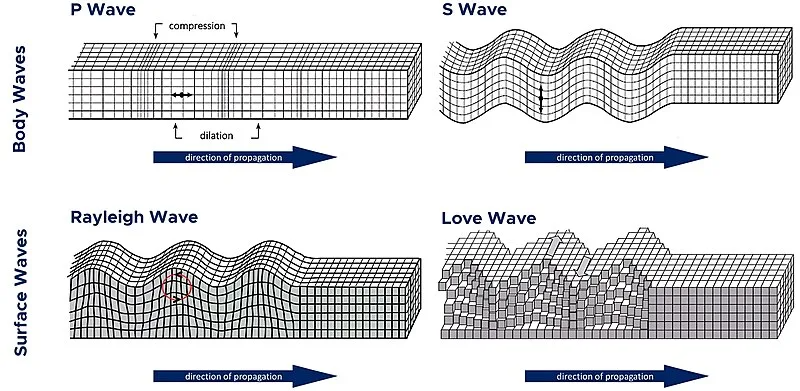August 06th Current Affairs
Table of Contents

Operation Sindoor
July 21st Current Affairs Home / Operation Sindoor Why in News? Parliament’s Monsoon Session, starting July 21, 2025, is expected to feature
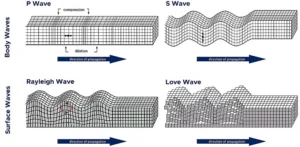
Alaska Earthquakes
July 21st Current Affairs Home / Alaska Earthquakes Why in News? On July 21, 2025, Alaska Peninsula was struck by

August 2, 2027 Solar Eclipse
July 21st Current Affairs Home / August 2, 2027 Solar Eclipse Why in News? A total solar eclipse is set

India’s milestone in clean energy transition
July 21st Current Affairs Home / India’s milestone in clean energy transition Why in News? India achieved a milestone by

‘Baby Grok’, child-friendly AI app
July 21st Current Affairs Home / ‘Baby Grok’, Child-friendly AI app Why in News? Elon Musk’s AI company xAI has announced
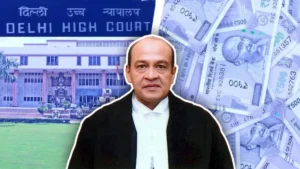
Impeachment proceedings against Justice Yashwant Verma
July 22nd Current Affairs Home / Impeachment proceedings against Justice Yashwant Verma Context On July 22, 2025, impeachment proceedings against
Uttarkashi Flash Flood 2025

Context
On August 5, 2025, a cloudburst triggered devastating flash floods in the Kheer Ganga river near Dharali village in Uttarkashi, Uttarakhand, leading to the death of at least 4 people and over 60 people feared missing. The floods demolished homes, temples, roads, and hotels, with over 25 establishments destroyed.
Background
The Himalayas, especially Uttarakhand, have been prone to extreme weather events, with similar disasters seen in Kedarnath (2013), Chamoli (2021), and others. This region’s fragility is worsened by anthropogenic activities, including deforestation, unregulated construction, and dam-building.
Geographical Factors
Uttarkashi lies in a seismically active and ecologically fragile region of the Lesser Himalayas. Dharali village is at 8,600 feet above sea level, close to the Gangotri glacier and river origins. Steep slopes, narrow valleys, and unconsolidated rocks make the region susceptible to landslides and flash floods.
Geological & Climatological Causes
- Cloudbursts: Sudden, high-intensity rainfall (usually >100mm/hour over a small area) leads to flash floods.
- Glacial Retreat & Lakes: Climate change has accelerated glacial melting, leading to the formation of Glacial Lake Outburst Floods (GLOFs).
- Monsoon Variability: Warming of the Indian Ocean increases erratic rainfall patterns, intensifying extreme weather events.
Laws & Cases
- Disaster Management Act, 2005: Governs disaster preparedness and response through NDMA, NDRF, and SDMAs.
- Environment Protection Act, 1986: Enables the regulation of development in ecologically sensitive areas.
- Relevant Supreme Court Cases:
- T.N. Godavarman v. Union of India: Emphasised forest conservation.
- Lafarge Umiam Mining Case (2011): Reinforced “public trust doctrine” for environmental protection.
- Alaknanda Hydro Power Co. v. Anuj Joshi (2014): Ordered cumulative impact assessments in Uttarakhand hydro projects.
NDMA Guidelines
- Cloudburst Management (2010): Emphasises early warning systems, vulnerability mapping, and community-level preparedness.
- Landslide Hazard Management (2009): Highlights geotechnical investigations and real-time monitoring.
- Urban Flooding Guidelines: Advocate for proper drainage planning, watershed conservation, and zoning regulations.
Definition of Key Technical Terms
- Cloudburst: A sudden, heavy rainfall event over a limited area, causing flash floods.
- Flash Flood: Rapid flooding in low-lying areas following intense rainfall or dam breaks.
- GLOF: Glacial Lake Outburst Flood caused by the failure of glacial lake containment.
- Seismic Zone V: Highest earthquake-prone area in India (includes Uttarakhand).
Significance
- The incident highlights the need for climate-resilient infrastructure, sustainable tourism, and disaster preparedness.
- Reflects the challenges in balancing development and environmental protection in ecologically sensitive zones.
Impacts
Humanitarian:
- 4 deaths confirmed, 60+ missing, over 130 rescued.
- Loss of homes, livelihoods, and cultural heritage sites (e.g., Kalp Kedar temple).
Infrastructure:
- Damage to roads, railways (boulder on Haridwar-Dehradun track), and power grids.
Environmental:
- Large-scale soil erosion, sediment deposition, and loss of green cover.
Challenges in Disaster Management
- Inaccessible Terrain: Delays rescue operations.
- Communication Gaps: Network disruptions post-disaster.
- Overdevelopment: Construction in high-risk zones worsens impacts.
- Coordination: Multiple agencies working without unified command slows efficiency.
Way Forward
- Scientific Land Use Planning: Ban large constructions in eco-sensitive zones.
- Real-time Early Warning Systems: Expand the Doppler radar network and satellite monitoring.
- Community-Based Preparedness: Local training, mock drills, and decentralised shelters.
- Climate-Resilient Infrastructure: Build with seismic, flood, and landslide considerations.
- Policy Shift: From reactive to preventive disaster risk reduction (DRR) approach.
Prelims MCQ
Q. Regarding flash floods in the Himalayan region, consider the following statements:
- Cloudbursts in the Himalayas are often linked with steep topography and intense convectional rainfall.
- The Disaster Management Act, 2005, provides for early warning systems and community-level disaster preparedness.
- Glacial Lake Outburst Floods (GLOFs) are typically caused by tectonic activity disrupting glacial barriers.
Which of the above is/are correct?
A. 1 and 2 only
B. 2 and 3 only
C. 1 and 3 only
D. 1, 2, and 3
Answer: A
Explanation:
- Statement 1: Correct. Cloudbursts occur due to a combination of orographic lift, rapid condensation, and steep terrain, leading to flash floods.
- Statement 2: Correct. The Disaster Management Act, 2005, institutionalises early warning, NDMA guidelines, and community preparedness.
- Statement 3: Incorrect. While tectonic activity can cause GLOFs, the more frequent triggers are glacial melting, moraine failure, or heavy rainfall—not tectonic shifts.
1 and 2 are correct.
Mains Question
Q. The Uttarkashi flash floods are a stark reminder of the Himalayan region’s ecological fragility. Critically analyse. (10 marks)
Supreme Court to Hear Plea for Restoration of Jammu & Kashmir Statehood
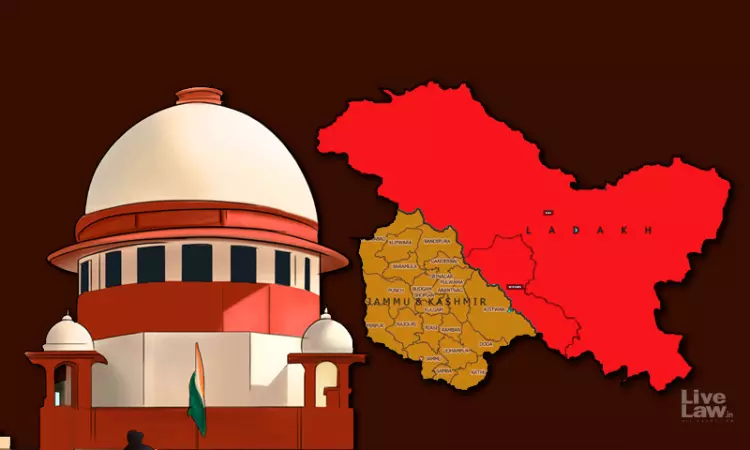
Context
The Supreme Court is scheduled to hear a petition on August 8, 2025, seeking the restoration of statehood to Jammu & Kashmir (J&K). The plea has been filed by citizens who argue that the prolonged continuation of J&K as a Union Territory (UT) violates constitutional principles and undermines the rights of its residents.
Background
- On August 5, 2019, the Government of India abrogated Article 370, which provided special status to J&K.
- Subsequently, the Jammu and Kashmir Reorganisation Act, 2019, split the erstwhile state into two UTs: Jammu & Kashmir (with legislature) and Ladakh (without legislature).
- The Constitution Bench of the Supreme Court upheld this abrogation in December 2023, but directed that elections must be held by September 2024 and statehood restored “at the earliest.”
- Although elections were held, statehood has not been restored, prompting this legal challenge.
Reasons for the Plea
- Delay in restoration allegedly infringes upon democratic rights and violates the federal structure of the Constitution.
- Petitioners argue that an elected legislature without full state powers is constitutionally inadequate.
- The continuation of central control over key subjects such as police and public order has raised concerns over autonomy and governance.
Constitutional Provisions & Laws
- Article 3 allows Parliament to create new states or alter boundaries, but its use to convert a state into a UT remains constitutionally contested.
- The J&K Reorganisation Act, 2019 enacted the bifurcation and temporary UT status.
- Article 370, now abrogated, earlier restricted the Centre’s legislative powers in J&K without concurrence of its Assembly.
Supreme Court Cases & Verdicts
- In December 2023, the Supreme Court upheld the abrogation of Article 370 but avoided ruling on whether Parliament can dissolve statehood under Article 3, due to a government assurance that statehood would be restored.
- In May 2024, review petitions were dismissed, affirming the Court’s position.
Committee Guidelines
While the Court recommended certain reviews related to rights violations and democratic safeguards, no formal committee or chairperson has been appointed to guide the restoration process of statehood.
Significance
- Restoration of statehood would return full control over governance to the people and legislature of J&K.
- It would also strengthen the federal structure, demonstrating respect for constitutional limits and democratic principles.
- Statehood ensures greater autonomy over law enforcement, development planning, and legislative authority.
Definitions of Technical Terms
- Federalism: A system where power is divided between a central authority and constituent units (states).
- Basic Structure Doctrine: A judicial principle that Parliament cannot alter the fundamental framework of the Constitution.
- Union Territory: An administrative unit governed directly by the Central Government, often with limited legislative powers.
- Public Order and Police: Subjects on the State List which are controlled by the Central Government in Union Territories.
Security and Legal Nuances
- Security concerns in J&K and Ladakh were part of the rationale for creating UTs.
- However, elections were conducted peacefully, suggesting improved conditions.
- The legal debate remains unresolved on whether a state can be permanently converted into a UT under Article 3.
Impacts
- On citizens: Greater democratic participation and accountability in governance.
- On governance: Devolution of administrative powers from the Lieutenant Governor to elected representatives.
- On Centre–State relations: A precedent for managing sensitive federal matters through constitutional compliance.
Challenges
- The Centre has not provided a clear timeline for restoring statehood.
- The Supreme Court has so far avoided addressing the core Article 3 issue, leading to legal ambiguity.
- Continued central control risks eroding trust in democratic institutions and constitutional promises.
Way Forward
- The Supreme Court should provide clarity on the constitutional limits of Article 3.
- The Centre should introduce legislation or make an executive declaration to restore statehood within a defined timeframe.
- Restoration must be coupled with institutional safeguards to ensure stability, accountability, and respect for federal principles.
Prelims MCQ
Q. Which of the following statements is/are correct?
- The Supreme Court, in its December 2023 judgment, directed that statehood for Jammu & Kashmir must be restored “at the earliest.”
- Article 3 of the Constitution explicitly allows Parliament to abolish a state and convert it into a Union Territory.
- After the 2019 reorganisation, key subjects like police and public order in Jammu & Kashmir are under the control of the Lieutenant Governor.
Select the correct answer using the code below:
A. 1 only
B. 1 and 2 only
C. 1 and 3 only
D. 2 and 3 only
Answer: C
Explanation:
- Statement 1 is correct: The Supreme Court upheld the abrogation of Article 370 but also directed restoration of statehood “at the earliest.”
- Statement 2 is incorrect: Article 3 does not explicitly authorise abolishing a state into a UT; the constitutional validity of such an action remains unresolved.
- Statement 3 is correct: Under the J&K Reorganisation Act, 2019, police and public order remain with the Lieutenant Governor, not the elected legislature.
Thus, the correct answer is C: 1 and 3 only.
Mains Question
Q. Discuss the role of federalism and the Supreme Court’s restraint on Article 3 jurisprudence, surrounding the restoration of Jammu & Kashmir’s statehood post-2019 abrogation of Article 370. (15 marks)
Bihar Domicile Policy in School Teachers’ Appointment
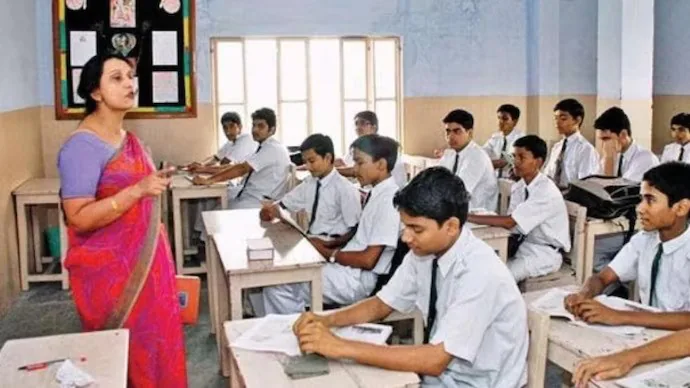
Context
On August 5, 2025, the Bihar Cabinet, chaired by Chief Minister Nitish Kumar, approved a domicile-based reservation policy for school teachers under the “Bihar State School Teacher (Appointment, Transfer, Disciplinary Action & Service Conditions) (Amendment) Rules 2025”. This policy prioritises candidates domiciled in Bihar for recruitment to teaching and non-teaching posts in government schools.
Background
- Since 2016, Bihar has granted 35% horizontal reservation for women in state government jobs, restricted to domiciled women.
- The state has also implemented caste-based and EWS reservations in recruitment.
- With TRE (Teacher Recruitment Exam)-4 and TRE-5 scheduled for 2025–26, the government is aligning teacher recruitment with state-centric employment goals, especially in the backdrop of high youth unemployment and political demands for local preference.
Reasons
- To increase employment opportunities for local youth and curb migration.
- To address regional disparities and ensure better representation of Bihar’s population in the education workforce.
- To fulfil electoral promises and respond to long-standing demands from Bihar’s students and civil society groups.
- Administrative rationale includes accountability, as local recruits are more likely to stay and serve in rural schools.
Constitutional Provisions
- Article 16(2): Prohibits discrimination in public employment based on place of birth.
- Article 16(4): Allows the state to make provisions for backward classes not adequately represented.
- Article 15(4) and 15(5): Permit special provisions for socially and educationally backward classes in education and public employment.
Laws Involved
- Bihar State School Teacher Rules (2020) and its 2025 Amendment: Legal basis for recruitment, transfers, and eligibility.
- Reservation Acts and Rules in Bihar govern OBC, EWS, SC/ST, and women’s reservation.
Supreme Court Cases
- Indra Sawhney v. Union of India (1992): Allowed reservation for backward classes but capped total reservation at 50%, except in extraordinary circumstances.
- Dr. Pradeep Jain v. Union of India (1984): The Court observed that “residence-based preferences” in education and jobs are constitutionally sensitive and should be used cautiously.
- Sunanda Reddy v. State of Andhra Pradesh (1995): Struck down 100% local reservation in teaching posts.
- Courts have held that limited domicile preferences are valid if justified under Article 16(4).
Committee Guidelines
Second Administrative Reforms Commission (Chair: Veerappa Moily) emphasised the need for local representation in public services, particularly in rural sectors like education and health.
Significance
- Ensures that local candidates benefit from public sector jobs in their own state.
- May improve teacher retention in rural schools.
- Responds to rising sub-nationalism and regional job prioritisation trends seen in other states.
- Political signal of prioritising “Bihari pride” and reversing historic out-migration.
Definitions of Technical Terms
- Domicile: A person’s legal residence in a particular state, often determined by educational qualification, birth, or long-term stay.
- Horizontal reservation: A category (like women or differently-abled) that cuts across vertical categories (SC/ST/OBC).
- TRE (Teachers Recruitment Examination): The official competitive exam for government teacher recruitment in Bihar.
Security and Legal Nuances
- Legal challenge likely if domicile preference exceeds reasonable limits.
- Risk of violating Article 14 (Right to Equality) and Article 16(2) if the exclusion of non-domiciles is absolute.
- Reservation ceiling (~85% reserved, including domicile) may raise constitutional questions.
Impacts
- Positive for Bihar’s youth, especially rural candidates with a state education background.
- May reduce interstate applications, leading to less diversity in the teacher workforce.
- It could set a precedent for other states, increasing policy fragmentation.
- Risk of judicial review, especially if total reservation exceeds the 50% ceiling without a solid justification.
Impacts
- Positive for Bihar’s youth, especially rural candidates with a state education background.
- May reduce interstate applications, leading to less diversity in the teacher workforce.
- It could set a precedent for other states, increasing policy fragmentation.
- Risk of judicial review, especially if total reservation exceeds the 50% ceiling without a solid justification.
Challenges
- Implementing this without excluding meritorious non-domiciled candidates unfairly.
- Managing potential litigation challenging the policy’s constitutionality.
- Risk of reverse migration or retaliation from other states imposing similar rules.
- Ensuring teacher quality, as narrowing eligibility may reduce the talent pool.
Way Forward
- The state must frame clear and fair criteria for domicile (e.g., school education in Bihar).
- Implement transitional arrangements for ongoing recruitment.
- Limit reservation impact by balancing open competition and regional representation.
- Ensure Supreme Court guidelines compliance, especially around reservation ceilings and equality.
Prelims MCQ
Q. Consider the following statements regarding the Bihar domicile policy for teacher appointments:
- The Bihar Cabinet has mandated that only candidates who have passed matriculation and intermediate from Bihar will get priority in teacher appointments.
- Article 16(2) of the Indian Constitution explicitly allows states to reserve jobs for domiciles to promote regional balance.
Which of the above statements is/are correct?
A. 1 only
B. 2 only
C. Both 1 and 2
D. Neither 1 nor 2
Answer: A. 1 only
Explanation:
- Statement 1 is correct. The Bihar Cabinet approved amendments under the Bihar State School Teacher (Appointment) Rules 2025, which provide priority to candidates who have completed matriculation and intermediate (10th and 12th) from Bihar. While this does not completely bar non-domiciled candidates, it ensures preference for students educated within Bihar, effectively promoting state domicile.
- Statement 2 is incorrect. Article 16(2) of the Constitution prohibits discrimination in government employment on grounds of place of birth, residence, caste, sex, religion, etc. It does not permit domicile-based reservations. Instead, Article 16(4) enables the State to make special provisions for backward classes that are under-represented in state services, which can be interpreted as a limited gateway for local preference—but not unrestricted domicile-based exclusion.
Therefore, while local preference may be allowed under certain interpretations of Article 16(4), blanket domicile-based reservation is constitutionally constrained and subject to judicial review.
Mains Question
Q. Discuss the constitutional and legal implications of implementing domicile-based reservation in public employment. (15 marks)
Sutlej-Yamuna Link (SYL) Canal Issue
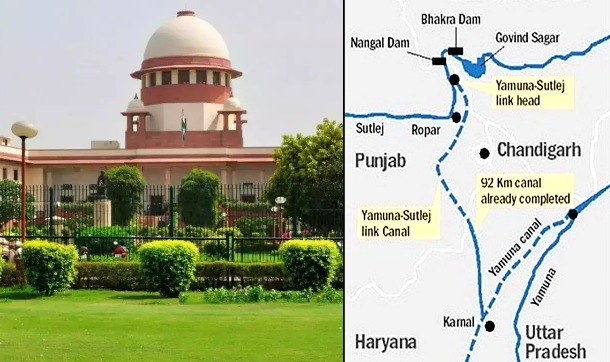
Context
On August 6, 2025, the latest round of talks between Punjab Chief Minister Bhagwant Mann and Haryana CM Nayab Singh Saini, mediated by Union Jal Shakti Minister CR Patil, ended inconclusively. Punjab proposed an alternative using Chenab River water by linking it to Indian infrastructure following the suspension of the Indus Waters Treaty (IWT), while Haryana remained committed to the completion of the SYL canal, citing Supreme Court directions.
Background
- The SYL Canal was proposed to share Ravi-Beas river waters between Punjab and Haryana following the 1976 reallocation post-Haryana’s creation in 1966.
- Punjab halted construction, citing a lack of surplus water and riparian rights.
- Haryana, claiming its rightful share, moved the Supreme Court.
- In 2004, Punjab terminated all water-sharing agreements via the Punjab Termination of Agreements Act, which was later declared unconstitutional by the Supreme Court (2016).
Reasons for Dispute
- Punjab’s position: Claims no surplus water to share; fears further depletion of groundwater affecting agriculture.
- Haryana’s position: Insists on legal entitlement and compliance with previous agreements and Supreme Court orders.
- Punjab’s proposal to use Chenab water hinges on leveraging international dynamics (IWT with Pakistan), which Haryana considers irrelevant.
Geographical Context
- Sutlej and Beas are eastern rivers under the Indus system, flowing primarily through Punjab and Himachal Pradesh.
- Yamuna flows through Haryana, Delhi, and Uttar Pradesh.
- Chenab is a western river allocated to Pakistan under the IWT.
Constitutional Provisions
- Article 262: Parliament can adjudicate inter-state river water disputes; it also allows the exclusion of the Supreme Court’s jurisdiction over such disputes via legislation.
- Entry 56, Union List: Centre’s power to regulate inter-state rivers.
- Article 131: Empowers the Supreme Court to hear disputes between states on legal grounds.
Laws Involved
- Punjab Termination of Agreements Act, 2004: Unilaterally terminated previous agreements—declared unconstitutional.
- Inter-State Water Disputes Act, 1956: Framework for river water-sharing disputes (not used here; SYL is not a typical “dispute over quantity”).
Supreme Court Cases & Verdicts
- 2016: SC declared the Punjab Termination Act unconstitutional, maintaining the validity of agreements.
- SC observed Punjab’s constitutional duty to complete the SYL canal.
- On-going hearings (next on Aug 13, 2025) concern the execution and implementation of SC orders and exploring alternative solutions.
Committee Guidelines
- Eradi Committee (1980s) led by assessed the availability and allocation of Ravi-Beas waters.
- The committee supported Haryana’s share and canal construction.
- No new central technical committee has assessed the Chenab diversion proposal.
Significance
- Water security for Haryana, especially in the southern and arid zones.
- For Punjab, it is an issue of agricultural viability, groundwater preservation, and federal rights.
- Politically, it’s deeply linked to regional identity and electoral narratives in both states.
Definitions of Technical Terms
- Riparian Rights: Legal rights of a state through which a river flows, to access and use the water.
- Canal System: An Artificial water channel for irrigation and water sharing.
- Indus Waters Treaty (IWT): 1960 agreement between India and Pakistan, brokered by the World Bank, dividing the Indus system rivers.
Social and Regionalism Nuances
- The SYL canal has become a symbol of regionalism in Punjab, especially post the 1980s militancy era.
- Any perceived “surrender” is seen as political betrayal.
- In Haryana, farmers and politicians view delay as a denial of justice.
- Shiromani Akali Dal (SAD) and other regional actors warned of conflating SYL with IWT, fearing strategic missteps.
Impacts
- Continued legal stalemate, with rising regional mistrust.
- Delayed resolution impacts irrigation, groundwater recharge, and agricultural planning in both states.
- Sets a precedent for interstate water conflict resolution, especially amid climate change-induced scarcity.
Challenges
- Legal implementation of SC verdicts versus political resistance in Punjab.
- Alternative proposals (like Chenab diversion) are technically and diplomatically complex.
- Any change in IWT requires international negotiation with Pakistan.
- Infrastructure, funding, and federal coordination remain barriers.
Way Forward
- Honour SC rulings, while considering mutually agreed water-sharing frameworks.
- The central government may form a technical-cum-political panel to evaluate alternatives.
- Greater transparency in data on water availability and usage can depoliticise the issue.
- Incorporate climate-resilient irrigation planning to reduce inter-state dependency.
Prelims MCQ
Q. Consider the following statements about the Sutlej-Yamuna Link (SYL) Canal issue:
- The Supreme Court has upheld the constitutional validity of the Punjab Termination of Agreements Act, 2004.
- The Sutlej-Yamuna Link Canal was originally designed to facilitate water sharing between Punjab and Haryana.
Which of the statements is/are correct?
A. 1 only
B. 2 only
C. Both 1 and 2
D. Neither 1 nor 2
Answer: B. 2 only
Explanation:
- Statement 1 is incorrect: The Punjab Termination of Agreements Act, 2004, was struck down as unconstitutional by the Supreme Court in 2016. The court held that Punjab cannot unilaterally annul agreements it is a party to, especially when the Centre is involved.
- Statement 2 is correct: The SYL Canal was envisaged to carry surplus Ravi-Beas waters to Haryana, ensuring water distribution between Punjab and the newly formed Haryana post-1966. The 1976 notification under the Inter-State River Water Dispute mechanism laid the basis for constructing this canal.
Thus, only Statement 2 is correct.
Mains Question
Q: Examine the constitutional and inter-state implications of the unresolved Sutlej-Yamuna Link canal dispute. Discuss how regional water conflicts can be resolved in the context of cooperative federalism. (250 words)
MoD Clears Arms Deals Worth ₹67,000 Crore

Context
On August 6, 2025, the Defence Acquisition Council (DAC), chaired by Defence Minister Rajnath Singh, approved major defence procurement proposals worth ₹67,000 crore. These include:
- 87 armed Medium Altitude Long Endurance (MALE) drones,
- Over 110 air-launched BrahMos missiles,
- Autonomous surface crafts, mountain radars, upgrades to Barak-1 and Spyder systems, and maintenance for S-400, C-17, and C-130J platforms.
Background
- India has been focused on modernising its armed forces through indigenisation and strategic acquisitions.
- The Defence Acquisition Council (DAC) was set up in 2001, post the Kargil Review Committee recommendations, to streamline arms procurement.
- The procurement aligns with the Aatmanirbhar Bharat (Self-Reliant India) vision and Defence Production Policy.
Reasons
- Lessons from Operation Sindoor (May 2025) underscored the need for long-range, precision-strike capabilities and better ISR (Intelligence, Surveillance, Reconnaissance) assets.
- Strengthening India’s deterrence posture vis-à-vis China and Pakistan.
- Ensuring readiness along both western and northern borders.
Geopolitical Context
- Tensions remain high with China on the LAC and with Pakistan along the LoC.
- India’s increased use of BrahMos and drones signals a shift from reactive to proactive strategies.
- Global drone warfare (e.g. Ukraine-Russia, Azerbaijan-Armenia) has made armed UAVs essential.
- The growing Indo-Pacific competition also demands blue-water naval capabilities.
UN Charter
- Article 51: Right to self-defence, allowing nations to procure defensive and deterrent weapons.
- India’s arms procurement does not violate the UN Arms Trade Treaty (ATT) as it is focused on legitimate national defence and not on external aggression.
Laws and Institutional Framework
- Defence Procurement Procedure (DPP) 2020, now revised as Defence Acquisition Procedure (DAP) 2020, guides acquisition under “Buy (Indian-IDDM)” and “Buy and Make (Indian)” categories.
- Under Section 18 of the Arms Act, 1959, only licensed procurement is permitted for defence.
Court Cases
While defence procurement is largely executive-driven, the SC in Centre for PIL v. Union of India (Rafale case) reaffirmed that national security decisions are beyond judicial scrutiny, unless mala fide.
Committee Guidelines
Shekatkar Committee on defence reforms recommended:
- Enhancement of combat capability and logistics efficiency,
- Promotion of indigenisation,
- Optimisation of manpower.
Significance
- Strengthens multi-domain warfare capabilities (air, land, sea, cyber).
- Reduces reliance on imports by mandating 60% indigenous content in drones.
- Enhances India’s second-strike capability and strategic deterrence.
Definitions of Technical Terms
- MALE drones: Medium Altitude Long Endurance unmanned aerial vehicles used for ISR and armed missions.
- BrahMos: A supersonic cruise missile jointly developed by India and Russia; Mach 2.8 speed, ~450 km range.
- Barak-1: Naval point-defence missile system for short-range threats.
- Spyder: Israeli quick-reaction air defence system.
- AoN (Acceptance of Necessity): First stage of defence procurement approval under DAP.
Defence, Strategic & Security Nuances
- Armed drones add deep-strike, risk-free capability.
- BrahMos with Sukhoi-30 MKI creates stand-off attack options.
- Autonomous surface crafts enhance anti-submarine warfare (ASW) capacity.
- Upgrades to missile systems and ISR platforms boost border surveillance and naval security.
Impacts
- Operational readiness across services, especially the IAF and the Navy.
- Boost to domestic defence manufacturing, with Make-in-India push.
- Enhances India’s technological edge over regional adversaries.
- Increased strategic signalling to both China and Pakistan.
Challenges
- Long gestation period for induction (e.g. MQ-9B drones by 2029-30).
- Balancing costs vs indigenous capacity.
- Technology transfer issues with foreign partners.
- Ensuring interoperability between older and newer platforms.
Way Forward
- Accelerate domestic R&D and private sector participation.
- Improve life-cycle management for existing platforms.
- Set up joint ventures and incentivise critical component manufacturing.
- Focus on AI-integrated warfare systems for the future.
Prelims MCQ
Q. Consider the following statements:
- The BrahMos missile system is a subsonic cruise missile developed by India in collaboration with France.
- The Defence Acquisition Council (DAC) is responsible for granting Acceptance of Necessity (AoN) for major defence procurements in India.
Which of the statements is/are correct?
A. 1 only
B. 2 only
C. Both 1 and 2
D. Neither 1 nor 2
Answer: B. 2 only
Explanation:
- Statement 1 is incorrect: The BrahMos is a supersonic cruise missile (not subsonic), jointly developed by India and Russia, not France. It is capable of reaching speeds of Mach 2.8 and is one of the fastest cruise missiles in operational use.
- Statement 2 is correct: The Defence Acquisition Council (DAC), chaired by the Defence Minister, is responsible for granting Acceptance of Necessity (AoN) — the first major step in India’s defence procurement process. It ensures strategic direction, budgetary consideration, and capability enhancement.
Mains Question
Q. “Defence preparedness in the 21st century must be multi-domain, indigenous, and technology-driven.” Critically examine. (10 marks)




